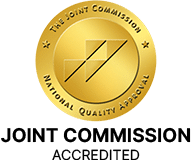Both PCP and ketamine are considered club drugs, generally used in a social setting like parties or nightclubs. Both of the drugs are psychoactive substances, meaning that they affect the way that users behave and think. They can alter perceptions of reality, and cause physical changes like increased blood pressure and spiked heart rate. Individually, the drugs are dangerous – when taken together, they can be lethal.
PCP is the street name for the drug phencyclidine, which is a white powder that is typically dissolved in liquid. Most individuals who use PCP will snort it, though it can also be added to a nicotine product (like a cigarette) and smoked. In severe cases of PCP abuse, the drug might be intravenously injected. Because PCP is so potent, those that abuse the drug consistently (even for a relatively short length of time) put themselves at great risk of lasting psychological and physical consequences. Those that take this specific drug often get into trouble with the law, seeing as it causes extremely erratic behavior, severe visual and auditory hallucinations and a distorted perception of the world.

Physiological Effects of Ketamine and PCP
Ketamine was first developed for medical uses, just like PCP. However, it was quickly determined that PCP was far too dangerous, so Ketamine was developed as an alternative – it was originally used as an anesthetic during surgical procedures. The two drugs are structured very similarly, and they cause similar effects. Recreational use of either drug is likely to cause the following side effects:
- Feelings of detachment.
- Slurring of speech and an inability to form complete sentences.
- Severe mood swings, usually marked by extreme agitation.
- Involuntary twitching of the muscles (and involuntary movements of the eyes).
- Hallucinations.
- Anxiety and panic attacks.
- Violent behaviors.
- Profuse sweating.
- Shallow breathing and respiratory depression.
Those who combine the drugs and take them in high doses are liable to experience nausea, vomiting, a loss of balance, vision loss, coma, and suicidal tendencies. While many people believe that potent party drugs like ketamine and PCP are generally taken infrequently and in small doses (in very specific settings), both drugs are highly addictive. There is a widespread stigma surrounding hallucinogenic drugs and addiction, and widespread misinformation continues to keep this stigma alive.
Many individuals struggle with physical and psychological dependencies on both PCP and ketamine. Both drugs are illegal and are classified as Schedule II and Schedule III substances (respectively), meaning they have the potential to be habit-forming.
The National Household Survey on Drug Abuse reported that around 6 million Americans over the age of 12 had experimented with PCP at least one time during their lives. Rates of use were shockingly high amongst youth and young adults. More than 3 percent of American high school seniors admitting to using the drug within the past year. It was also reported that hospital visits related to PCP use increased around 400 percent between 2005 and 2011. As far as ketamine goes, rates of abuse are somewhat lower – but they’re still significant. It was reported in 2015 that 3 million Americans over the age of 12 had used ketamine at least once during their lifetimes.
Ketamine and PCP Polydrug Addiction Treatment
Dissociative drugs like ketamine and PCP are habit-forming and produce serious side effects when taken alone – when mixing ketamine and PCP, the effects are often life-threatening. If you have been mixing chemical substances of any kind or if you have been struggling with an addiction to PCP, ketamine or both drugs, professional help must be sought immediately. For more information on our program of drug addiction recovery, give us a call today. We are here to help.
Published on: 2020-03-11
Updated on: 2025-04-29



